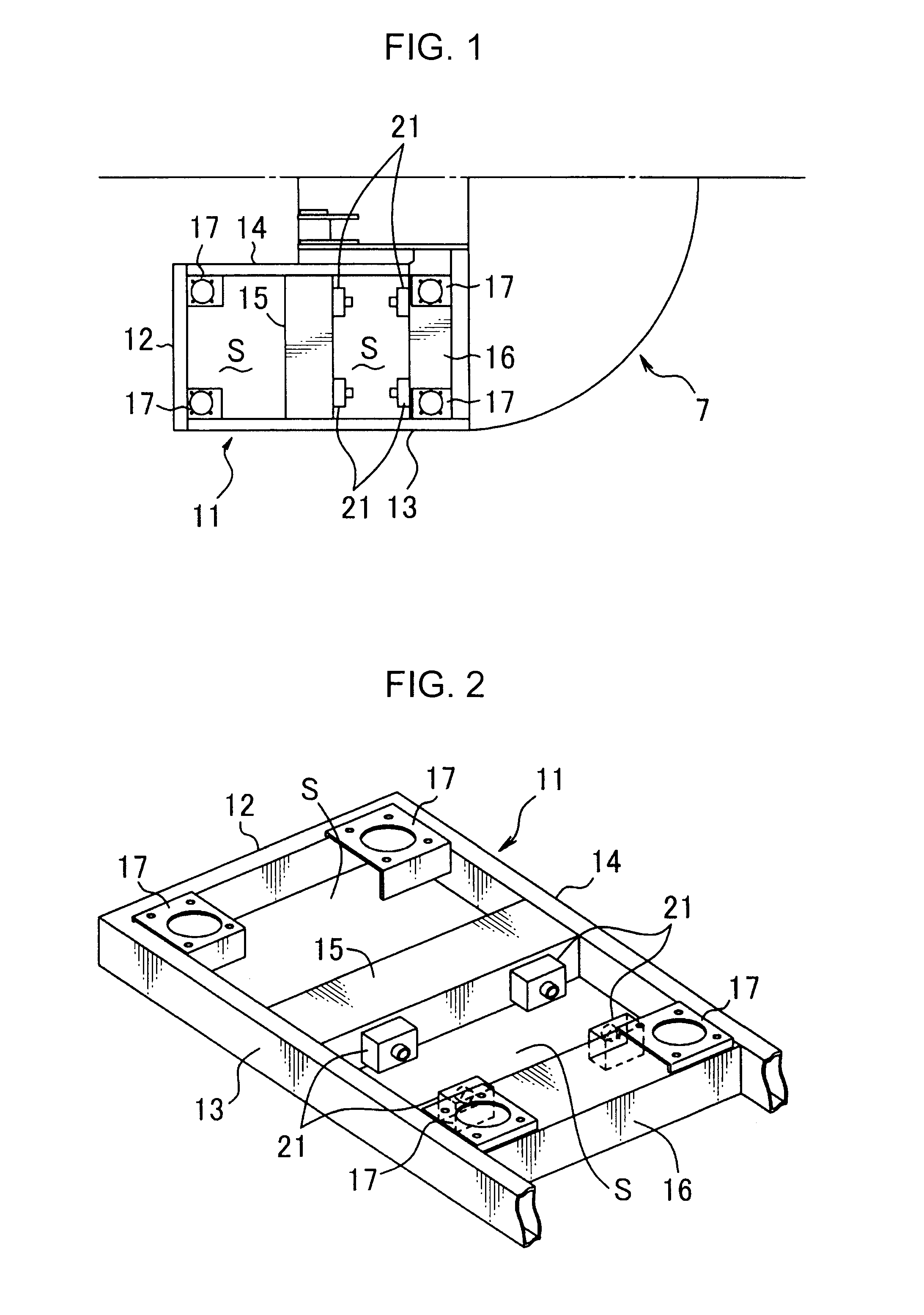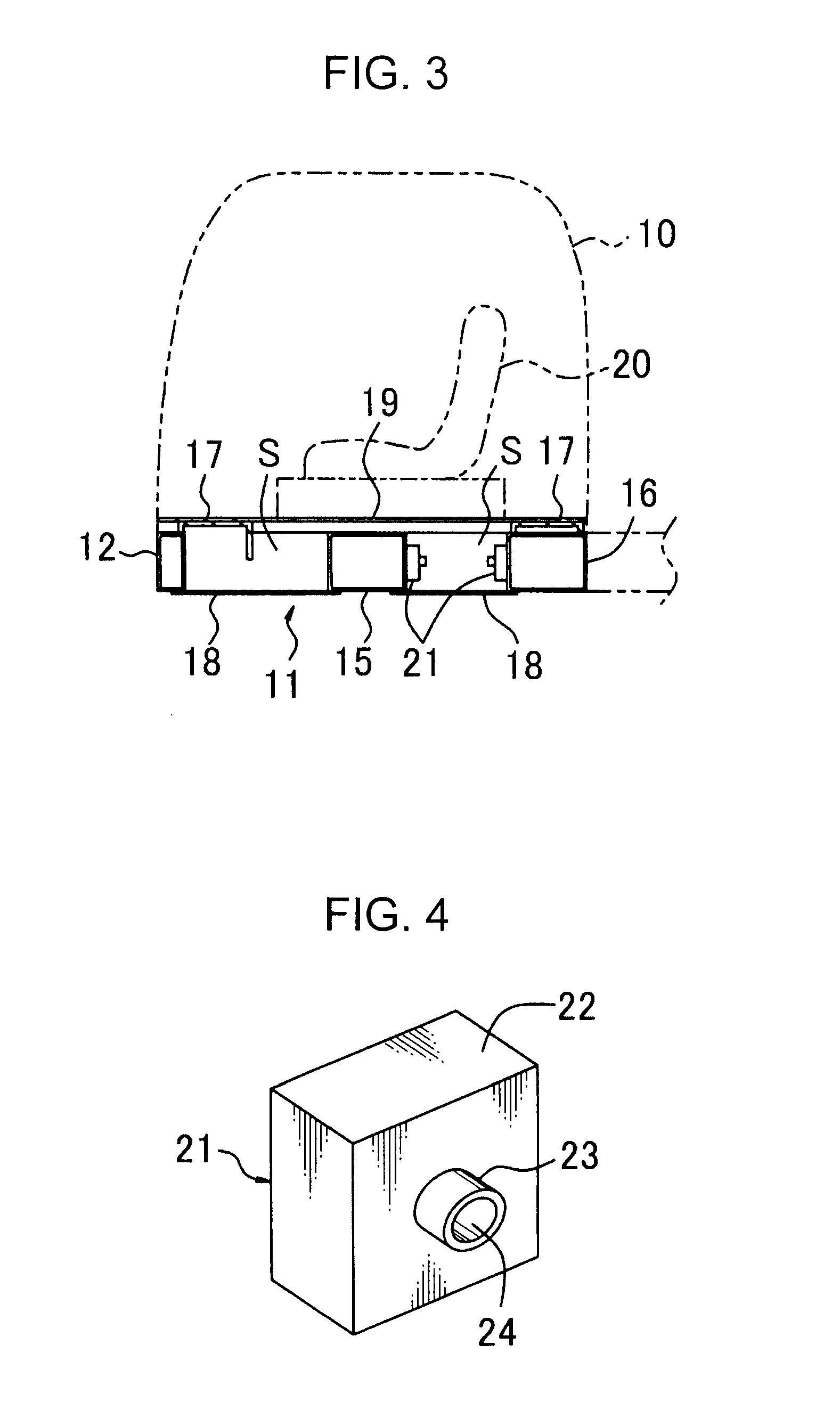Construction machine with cab noise reduction device
a construction machine and noise reduction technology, applied in the direction of machines/engines, roofs, instruments, etc., can solve the problems of deteriorating ride quality and comfort of the cab, lowering air-conditioning efficiency, and 3 being incapable of suppressing the intrusion of noise into the cab
- Summary
- Abstract
- Description
- Claims
- Application Information
AI Technical Summary
Benefits of technology
Problems solved by technology
Method used
Image
Examples
first embodiment
[0038]The first embodiment will be described while assigning the same reference number or code as that in FIGS. 14 to 17 to the same element or component as that shown in FIGS. 14 to 17, as well as those described in the A to D, and omitting its duplicated description.
[0039]FIGS. 1 to 7 show a construction machine according to a first embodiment, which machine comprises a cab noise reduction device including a resonator (also called “Helmholtz-type sound absorber”) 21 as shown in FIG. 4. The resonator 21 has a body portion 22, which is a hollow, rectangular parallelepiped-shaped box-like member, and a tubular-shaped neck portion 23. The body portion 22 has a sidewall surrounding an internal space, the sidewall formed with a through-hole at an appropriate position thereof. The neck portion 23 is fixed to the sidewall in such a manner as to surround the through-hole provided in the sidewall of the body portion 22 and protrude outwardly from the sidewall.
[0040]The resonator 21 in the f...
second embodiment
[0046]FIGS. 8 and 9 show the present invention. This embodiment, focusing on a point that each of the front and rear transverse frames 15 and 16 of the cab deck 11 has a widthwisely-long, hollow, box-shaped structure whose periphery is substantially closed, includes forming a resonator by utilization of each of the transverse frames 15 and 16.
[0047]In FIGS. 8 and 9, shown is only the front transverse frame 15 representatively, in the two transverse frames 15 and 16. FIG. 8 is a horizontal sectional view of the front transverse frame 15, and FIG. 9 is a diagram (rear view) of the front transverse frame 15, when viewed from the arrowed line IX in FIG. 8.
[0048]In the second embodiment, since the transverse frame 15 has a volume too large to form a resonator, there are provided a plurality of (in the illustrated embodiment, four) partition plates 25, - - - inside the transverse frame 15 in side-by-side relation in a longitudinal direction thereof, to thereby define two independent close...
third embodiment
[0051]FIG. 10 shows the present invention. This embodiment includes a vertical partition plate 29, in addition to the partition plates 25, - - - : the vertical partition plate 29 is so provided as to extend in the longitudinal direction of the transverse frame 15, i.e., the rightward-leftward direction of the hydraulic shovel, in a vertical posture, while intersecting with the partition plates 25, - - - at a right angle, thereby further partitioning each of the closed spaces 26 and 26 into a front space 26a and a rear space 26b. In association with the respective partitioned spaces, a plurality of openings 27 each opened in the frontward-rearward direction are provided; thus a plurality of resonators 30, - - - are formed. These resonators 30, - - - are capable of lowering sound pressures in both of the two under-cab spaces S and S defined on the front and rear sides of the transverse frame 15 as shown in FIGS. 1 to 3.
PUM
 Login to View More
Login to View More Abstract
Description
Claims
Application Information
 Login to View More
Login to View More - R&D
- Intellectual Property
- Life Sciences
- Materials
- Tech Scout
- Unparalleled Data Quality
- Higher Quality Content
- 60% Fewer Hallucinations
Browse by: Latest US Patents, China's latest patents, Technical Efficacy Thesaurus, Application Domain, Technology Topic, Popular Technical Reports.
© 2025 PatSnap. All rights reserved.Legal|Privacy policy|Modern Slavery Act Transparency Statement|Sitemap|About US| Contact US: help@patsnap.com



